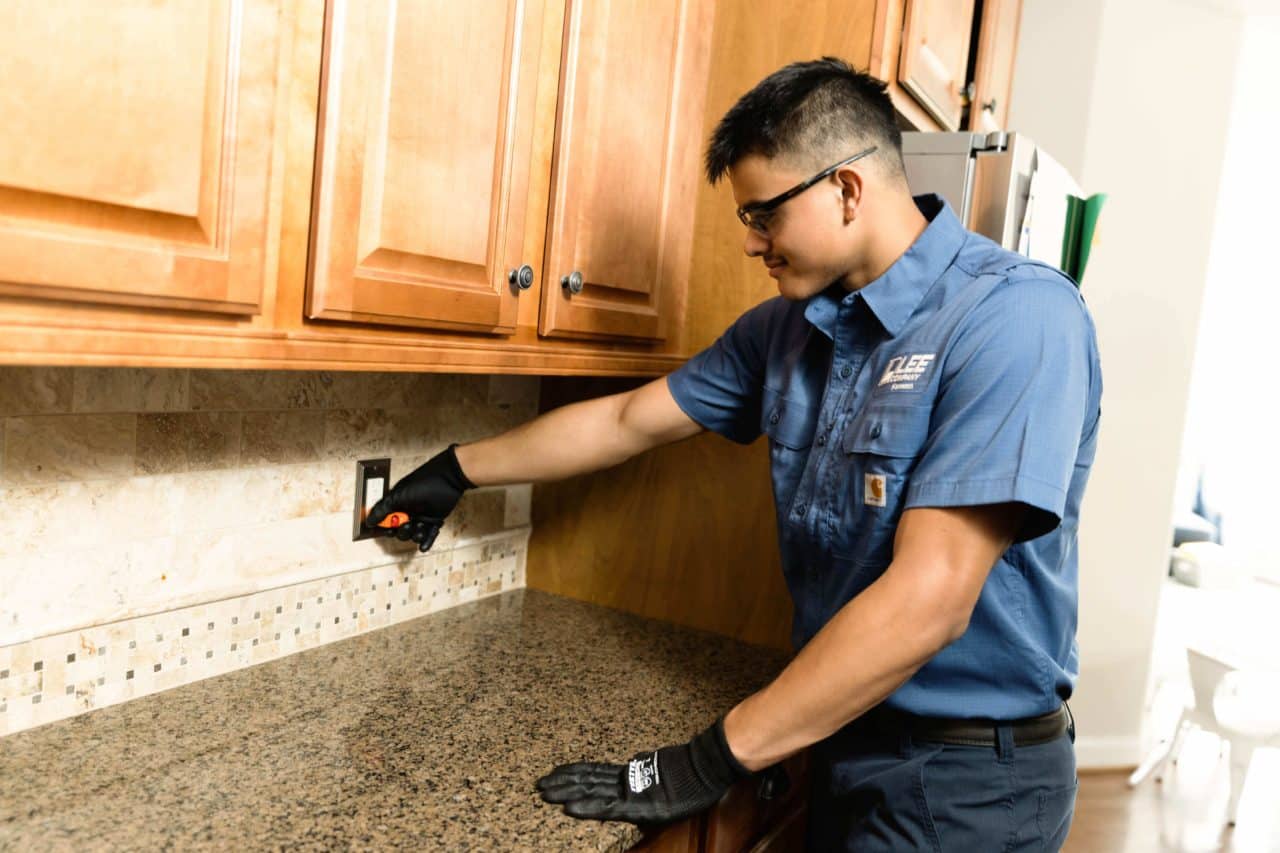“Honey, the lights just went out!” Sound familiar? That sudden darkness and the rush to find a flashlight can be stressful, but in most cases, it’s a sign of something much more mundane – you have a tripped breaker.
No matter what caused it, a tripped breaker can easily reset and restore your power. But why not take the opportunity to be proactive and prevent it from happening again?
You’re about to become a breaker-tripping expert! This blog post will uncover the common causes of a tripped breaker and how to avoid them.
1. Overloaded circuit
Have you ever plugged in a new appliance or turned on the air conditioner, and suddenly the power went out? It’s not because of a faulty device; it’s because you overloaded the circuit.
Your electrical system is only designed to handle so much power at once, so if you add too many appliances or machines to a single circuit, it can overload. Electrical overloads are the main cause of breaker trips.
Limit the number of devices plugged into the same circuit to avoid tripping the breaker. That might mean moving a few appliances or devices to another circuit or simply unplugging something.
2. Short circuit
Short circuits happen when one of your wires touches something it shouldn’t – like exposed metal or another wire. When this happens, the electricity takes an easier path and flows through the shortcut instead of down its intended route. This can cause a spark or electrical shock (both dangerous) and a tripped breaker.
Save the sparks and fire for campfires, not your electrical system! Always ensure your wires and outlets are safe, that none of your cords are frayed or exposed, and that any visible wiring is properly insulated.
3. Exposure to liquids
Anytime you have water and electricity in the same area, you risk tripped breakers, ground faults, and even fatal shock. This happens when electricity flows through the water instead of its intended route.
That’s why modern kitchens and bathrooms usually have ground fault circuit interrupters (GFCIs), which are very sensitive to the flow of electricity. GFCIs will respond quickly to even a small change in the current, shutting off the power to that outlet before it can cause any harm.
If you live in an older home, consider installing GFCIs in any rooms that encounter water:
- Kitchen
- Bathrooms
- Laundry room
- Outdoor outlets
- Basement
- Garage
This will bring your system up to code to help prevent ground faults and tripped breakers.
4. Arc fault
An arc fault is when a high-voltage electric current arcs across an open space. And believe us, you don’t want electricity flying through the air! This can cause serious damage to your home and your health.
Arc faults are usually caused by frayed or exposed wiring or wires that have come loose from their connections. They’re also common in older homes.
Make sure all of your wirings are secure and not damaged. You should also regularly inspect your electrical system to ensure it’s up to code and still in good condition.
5. Damage to your circuit breaker
A massive storm, power surge, or any other major electrical event can damage your circuit breaker and cause it to trip. If you have an older home with old wiring, there’s also a chance that the breaker isn’t up to code or has been damaged at some point.
If your circuit breaker trips often, it might be time to upgrade your electrical wiring or get a new circuit breaker. A certified electrician can help you pinpoint any damage and address it.
6. Incorrect breaker installation
What would happen if you installed a 15-amp circuit breaker to handle 25 amps? The breaker would constantly trip, of course!
That’s why it’s important to ensure all your breakers are installed correctly and are the right size for the job. If your home was built before 1998, chances are you’re using old breakers that don’t meet current safety standards.
If that’s the case, it’s time for an upgrade. Call a certified electrician to inspect your system and ensure all breakers are up to par.
7. Aged electrical components
Getting older is inevitable – but some things don’t age well. Worn-out cords, outlets, switches, and circuit breakers can all cause issues and lead to tripped breakers. Even power strips, appliances, and fixtures can cause issues if they get too old.
8. Low-quality wiring
Your wiring is like the veins and arteries of your electrical system. If it’s poor quality, you risk experiencing all sorts of issues – from low power to tripped breakers.
Low-quality wiring also increases your risk of fire, so it’s important to ensure all the wiring in your home is up to code and meets safety regulations. A qualified electrician can inspect your wiring to determine the type, quality, and condition to help you avoid tripped breakers and dangerous situations.
9. Natural causes
Rodents nibbling on wires, lightning strikes, and water damage are all natural causes that could trip your breaker.
If you live in an area that’s prone to these types of events, it’s a good idea to invest in surge protection and/or backup systems to help prevent any interruptions to your power supply.
To avoid property damage and safety issues, be aware of your environment and know what to look for:
- Wet spots
- Rodent nests
- Frayed wiring
- Burned areas on outlets or cords
- Strong smells of burning plastic, rubber, or metal
This knowledge can help you prevent power outages, tripped breakers, and other dangerous electrical issues.
Lee Company offers expert home electrical inspections
Having a tripped breaker can be both frustrating and dangerous. But now that you know what causes them, you’re better equipped to quickly identify and fix the problem – before any more harm is done.
Don’t let a tripped breaker trip up your day! If your electrical system needs professional attention, be sure to contact Lee Company. We’ll conduct a comprehensive home electrical inspection and make sure your power is flowing properly. We even offer 24-hour emergency services, so you’re never left in the dark.
Tripped Circuit Breaker FAQs
How do you fix a circuit breaker that keeps tripping?
To fix a circuit breaker that keeps tripping, identify the cause. It might be overloaded circuits or faulty appliances. If the problem persists, you may need to replace the breaker. Consult an electrician.
How do I find what is tripping my circuit breaker?
To find what is tripping your circuit breaker, unplug appliances on the affected circuit and turn them back on one by one to identify the source of the overload or short circuit.
What are the most common causes of a tripped breaker?
The most common causes of a tripped circuit breaker are overloaded circuits, short circuits, ground faults, and malfunctioning appliances.
How do I know if a circuit breaker is bad?
A bad circuit breaker will show signs like not staying reset, visible damage, or inconsistent power delivery. If in doubt, have a professional test it.
Need a home electrical inspection?
CALL US NOW AT 615.567.1000

